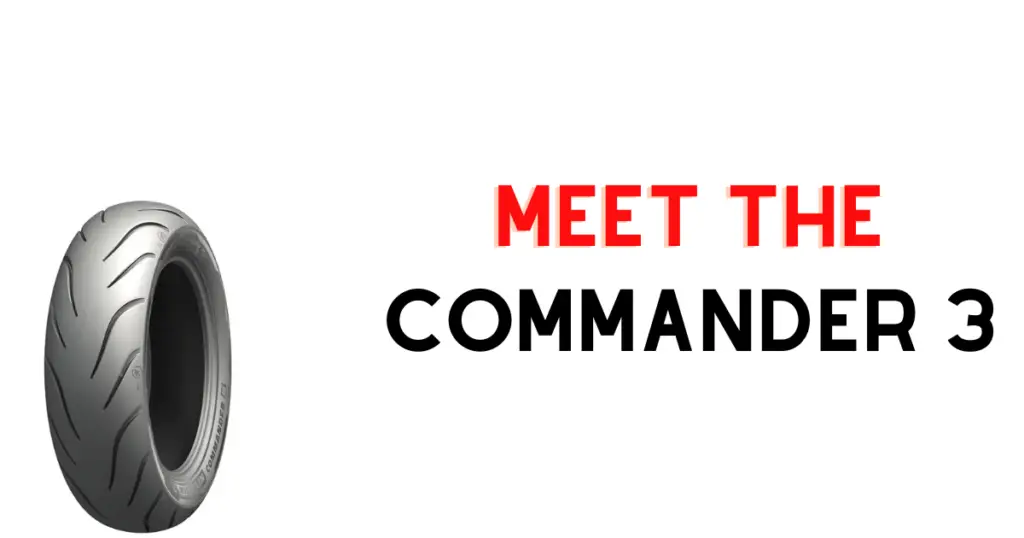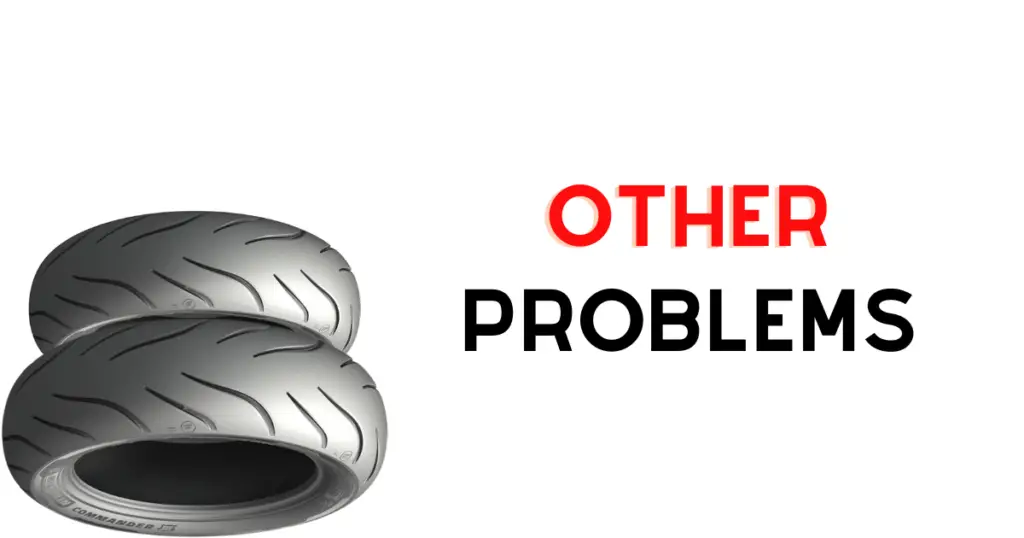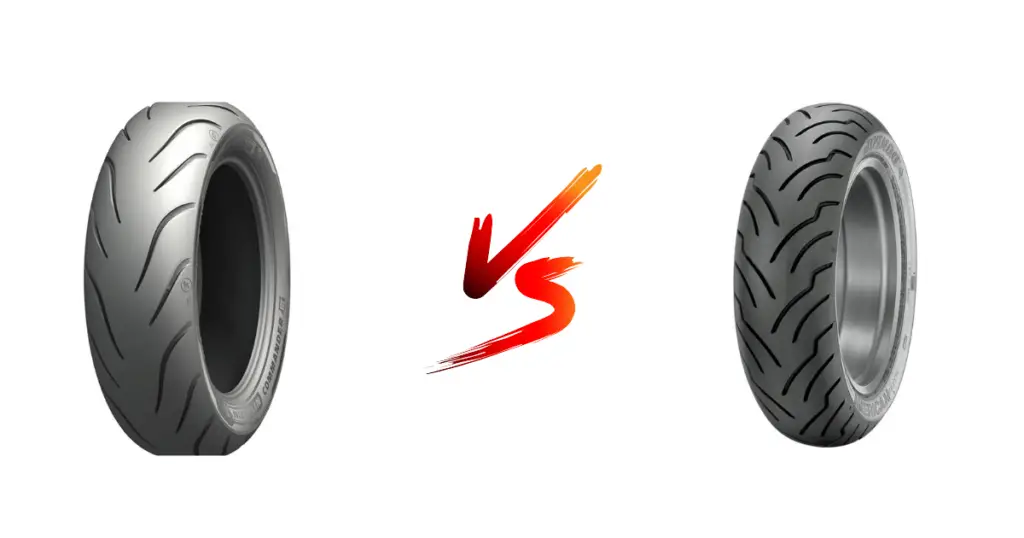Are you in the market for new motorcycle tires? Have you heard about the Michelin Commander 3 but are unsure if it’s the right choice for your ride? With the myriad of tire options available, making the right selection can be daunting. Why do some riders swear by the Michelin Commander 3, citing its durability and longevity, while others point out its flaws? Is it possible that a tire praised for its performance could also be a source of discomfort and danger?
Imagine hitting the open road, feeling every curve with confidence, and enjoying a smooth ride, only to be hindered by excessive vibration, poor handling, or even premature wear. These are just a few issues reported by riders of the Michelin Commander 3. But what lies beneath these problems? Are these isolated incidents, or is there a pattern that potential buyers should be wary of?
In the quest for the perfect ride, understanding the nuances of your motorcycle’s tires is crucial. This article delves into the heart of the matter, exploring the reported problems with the Michelin Commander 3, from vibration and noise to handling and tread wear. But it doesn’t stop there. It’s important to highlight the tire’s innovative design, like the Aramid Shield Technology and unique tread pattern, which contribute to its grip, stability, and overall performance.
As we dissect these issues, we’ll also provide solutions and maintenance tips to help you maximize the potential of your tires. Whether you’re cruising on wet roads or navigating through rough terrains, the right knowledge and care can transform your riding experience.
Join us as we explore the Michelin Commander 3’s features, problems, and how it compares to its competitors. From handling and stability concerns to longevity and maintenance best practices, this comprehensive guide aims to equip you with the information you need to make an informed decision. Can the Michelin Commander 3 live up to its reputation, or are its issues too significant to ignore? Let’s find out together.
Related:
– Best Harley Touring Tires: Top Picks for Long-Distance Rides
Overview of The Michelin Commander 3

Aramid Shield Technology
Michelin Commander 3 tires are designed to offer superior grip and traction on both wet and dry surfaces. The Aramid Shield Technology is a combination of high-density fibers and aramid fibers that are used to reinforce the tire’s structure. This technology is responsible for providing excellent stability, handling, and durability to the tire.
Aramid fibers are five times stronger than steel, which makes them highly resistant to punctures and cuts. They are also lightweight, which helps to reduce the overall weight of the tire. This feature of the Michelin Commander 3 tire ensures that it provides a comfortable ride even on rough terrain.
Tread Pattern and Depth
The tread pattern and depth of the Michelin Commander 3 tire are designed to offer excellent traction and stability. The tire has a deep tread pattern that provides a larger contact patch with the road surface, which increases the grip and traction of the tire.
The tread pattern is also designed to provide excellent water evacuation, which means that the tire can maintain its grip on wet surfaces. The tire’s tread depth is also designed to ensure that the tire wears evenly, which increases its lifespan.
In conclusion, the Michelin Commander 3 tire is designed to provide superior grip, traction, and durability. The Aramid Shield Technology and the tread pattern and depth are some of the features that make this tire stand out from the rest. Whether you are riding on wet or dry surfaces, the Michelin Commander 3 tire is designed to provide a comfortable and safe ride.
Michelin Commander 3 Problems As They’re Most Commonly Reported
Handling and Stability Concerns
The Michelin Commander 3 tires have been reported to have some handling and stability concerns. These issues can cause problems for riders, especially at high speeds or on uneven roads. However, there are some ways to address these concerns and ensure a safer ride.
Vibration and Noise Issues
One of the most common issues reported by customers is excessive vibration and noise while riding on Michelin Commander 3 tires. This can cause discomfort for the rider and make it difficult to maintain control of the motorcycle. The vibration and noise can be caused by a variety of factors, including tire wear, incorrect tire pressure, and poor road conditions.
To address this issue, riders should ensure that their tires are properly inflated and that they are not worn down. They should also try to avoid rough or uneven roads, as these can exacerbate the problem. If the issue persists, it may be necessary to have the tires professionally balanced or replaced.
Response to Road Conditions
Another concern with the Michelin Commander 3 tires is their response to road conditions. Some riders have reported that the tires feel unstable or wobbly when riding over bumps or on uneven roads. This can be a serious safety issue, as it can cause the rider to lose control of the motorcycle.
To address this issue, riders should ensure that their tires are properly inflated and that they are not worn down. They should also try to avoid rough or uneven roads, as these can exacerbate the problem. Additionally, riders should be aware of their speed and adjust it accordingly when riding on rough roads. Slowing down can help to reduce the risk of instability and wobble feedback.
Overall, while the Michelin Commander 3 tires have some handling and stability concerns, these issues can be addressed with proper maintenance and safe riding practices. By ensuring that their tires are properly inflated and that they are not worn down, riders can enjoy a safer and more comfortable ride on their motorcycles.
Tire Longevity and Maintenance
Wear and Tread Life
The Michelin Commander 3 is a high-quality tire that is designed to offer long-lasting performance and durability. However, like any other tire, it will eventually wear out and need to be replaced. The lifespan of the tire will depend on various factors such as the type of vehicle, driving conditions, and maintenance practices.
One of the common problems reported by users is the tread wearing out too soon. The Michelin Commander 3 has a 100% silica compound that provides excellent grip and handling. However, the tread quality is poor, and it has less tread depth than other tires. As a result, the tires become unusable in a short time, and many riders report that they didn’t even make it past 5,000 miles.
Maintenance Best Practices To Prolong The Tire
Proper maintenance is crucial to ensure the longevity and performance of the Michelin Commander 3 tire. Here are some best practices that can help extend the life of the tire:
- Check the tire pressure regularly and maintain it at the recommended level. Underinflated or overinflated tires can cause uneven wear and reduce the lifespan of the tire.
- Inspect the tire for any signs of damage such as cuts, punctures, or bulges. Replace the tire immediately if you notice any of these signs.
- Rotate the tires regularly to promote even wear. This is especially important for vehicles with front-wheel or rear-wheel drive.
- Avoid overloading the vehicle beyond the recommended weight limit. Overloading can cause excessive wear on the tires and reduce their lifespan.
By following these maintenance best practices, you can ensure that your Michelin Commander 3 tire lasts longer and performs better. Proper maintenance will also help you avoid the common problems associated with the tire, such as tread wearing out too soon and losing air frequently.
Troubleshooting Other Common Problems

When it comes to Michelin Commander 3 tires, there are a few common issues that riders may encounter. Some of these issues include poor handling, vibration, noise while driving, tread wearing out too soon, and losing air frequently. However, these problems can be managed if the tire is maintained properly.
Pressure and Inflation Problems
One of the most common issues with Michelin Commander 3 tires is underinflation, which can lead to a host of problems such as cupping, loss of rubber chunks, and punctures. It is important to check the tire pressure regularly to ensure that it is at the recommended level. Michelin recommends a pressure of 36 psi for the front tire and 40 psi for the rear tire.
Overinflation can also be a problem with Michelin Commander 3 tires. It can cause the tire to wear out faster and lead to a harsh ride. It is important to check the tire pressure with a reliable gauge and not to rely on the pressure gauge at the gas station.
Structural Concerns
Another issue that riders may encounter with Michelin Commander 3 tires is cracks in the sidewall or tread area. Cracks can be caused by a variety of factors such as exposure to sunlight, age, and improper storage. If the cracks are severe, it may be necessary to replace the tire.
Cupping is another issue that can occur with Michelin Commander 3 tires. It is characterized by uneven wear on the tread surface, which can lead to a rough ride and noise. Cupping can be caused by a variety of factors such as improper inflation, misalignment, and worn suspension components.
In conclusion, Michelin Commander 3 tires are known to have some common issues such as underinflation, overinflation, cracks, and cupping. However, these issues can be managed with proper maintenance and troubleshooting. Regularly checking tire pressure and inspecting the tire for any signs of damage can go a long way in preventing these issues from occurring.
Comparison with Competitors

When it comes to motorcycle tires, the Michelin Commander 3 is often compared to its predecessor, the Michelin Commander II. While the Commander II is a reliable and durable tire, the Commander 3 offers improved wet and dry grip, better handling, and longer tread life. The Commander 3 is also known for its superior braking performance in wet conditions, making it a popular choice among riders who value safety.
In terms of competitors, the Dunlop American Elite is often mentioned in the same breath as the Michelin Commander 3. While the Dunlop is a solid tire with good grip and handling, it falls short in terms of tread life and braking performance. The Commander 3 is also quieter and smoother on the road, making for a more comfortable ride.
Overall, the Michelin Commander 3 stands out among its competitors for its performance without compromise. Riders who prioritize safety, comfort, and longevity will find that the Commander 3 delivers in all areas.